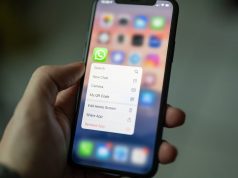Some network industry analysts speak of 5G network technology as if it were a panacea to all the connectivity and performance issues burdening the industry. Others have already completely shifted to a 4G long-term evolution (LTE), low-power wide-area network (LPWAN): Cat-M and NB-IoT. They’re not talking about the part that the shift to newer or next-generation network technology will bring about the sunset of legacy network technology such as 2G and 3G.
If you want to know more about what will happen when some legacy network technology reaches its sunset dates, you might want to read this article on 3G sunsets and their impact on business operations. Here are some ways by which 2G/3G network technology will impact business operations when the network technology reaches its sunset date.
Problems With Deployment And Connectivity Of Legacy Devices
When a telecommunications (telco) network reaches the sunset date of its network technology, such an event will have sweeping effects on its network infrastructure. The old equipment and devices were configurated for the 2G/3G network technology. When a network passes a 2G/3G sunset date, all the equipment, tools, and devices using their legacy 2G/3G won’t connect with the network infrastructure.
One of the first issues and problems that business operations will encounter with the impact of the 2G/3G sunset is that legacy devices will encounter issues and problems with deployment and connectivity. The 2G/3G sunset doesn’t mean that all networks will phase out all of their legacy technology simultaneously. In all likelihood, they’re going to develop a phasing-out plan as newer devices are enticed to shift to faster internet speeds promised by 5G.
Keep in mind that at least in the United States, more than 40% of all the devices used in Mobile Personal Emergency Services (MPERS) are configured to hook on 3G network interconnectivity. Some of these devices provide coverage to critical use medical cases. This will have an impact on the operations of hospitals and healthcare institutions.
Service Disruptions
When a telco service provider’s network reaches its sunset, business operations that heavily rely on the 2G/3G technology will experience service disruptions among many machines, equipment, and devices. One of the possible causes of these disruptions is the network technology compatibility and configuration of the legacy 2G/3G machines, equipment, and devices.
Many manufacturing, industrial, heavy machinery, and transportation businesses are now transitioning to the coming era of the Internet of Things (IoT). But there are still numerous large enterprises that continue to use their legacy machines, equipment, and devices. Most legacy machines and equipment are still configured to 2G/3G network technology.
However, the thing with legacy devices is that they tend to take some time before they can be upgraded to a new generation network technology. Their operating systems may not yet be configured, compatible with, or ready for new network technology. When 2G/3G goes past its sunset, it won’t be that easy to retool some machines and equipment for the newer network technology. The impact of this is that there could be service disruptions across entire enterprises and possibly even across entire industries.
Degraded Performance
As more towers, machines, equipment, and access points of the telco’s 2G/3G network technology are phased out, and this will potentially degrade the performance of the portion of the network that supports 2G/3G technology. Since the load capacity of the remaining network infrastructure for 2G/3G technology would be significantly reduced over time, the quality of service that the network can provide to users and clients will similarly be degraded to the minimum compliance required by regulators.
From the point of view of the user or client, they will experience intermittent connectivity. They’ll have network connectivity sometimes, but there will be long hours of the day when they won’t have any network connection. This intermittent network connectivity will undoubtedly negatively impact businesses that heavily rely on the telco network. For one, merchants who are dependent on their point-of-sale (POS) terminals to accept payments will most likely encounter issues with receiving customer payments through their POS terminals.
Impact On POS Terminals
When the 2G/3G sunset goes into effect, some legacy POS terminals might experience disruptions or shutdowns because they won’t connect to the new network technology access points.
The good thing is that the sunset of 2G/3G network technology won’t be done with one flip of a switch, as the term might connote. Instead, the network would be doing a phased decommissioning of existing equipment and devices and an orderly transition to the new network technology. They’ll most likely draw up a Phasing Out Plan to implement these measures.
Hence, networks will have to ‘refarm’ the spectrums being used by their legacy equipment. They’ll then reconfigure them for the generations they’ll keep. But although the network itself will most likely retool for their new generation network, it doesn’t follow that all of their user clients would also adjust. Some businesses won’t be able to change their legacy POS in time for the transition. These businesses will experience disruptions in their operations.
Poor Customer Service
When networks move past their sunset date, customer service is one of those segments that will experience some of the most difficult issues and challenges. Since the network performance is degraded, they will also have a reduced capacity to respond to some users and clients who are part of the network infrastructure end-users.
For one, the network’s numerous institutional and individual users won’t be able to make the same changes with the technical configuration of their equipment and devices. Some users may be left with legacy equipment and devices. They might not even know that their network technology has already implemented a sunset date.
The client users or customers themselves would indeed be affected by the sunset of 2G/3G, especially if they would refuse to change some of their profiles and devices. An example of this is that some of the buyers in an e-commerce website or app might not check out their orders. They might not even be able to receive the items that they ordered. The result is that there will be a spike in the number of people complaining that they cannot connect to the internet.
Additional Maintenance Works
Another potential impact of the sunset of 2G/3G network technology is that this will most likely require networks to perform more maintenance works for the client. Some of the maintenance works would have to include migration from legacy systems, taking inventory of the default configuration and connectivity of new platforms, migration and staring of data, and testing the new network and its own.
Conclusion
The shift to 4G long-term evolution (LTE) and 5G network technology will change telco networks’ network infrastructure and load capacity. This would require them to change their antennas, towers, base stations, repeaters, and access points to equipment that would no longer be compatible with 2G/3G network technology. This event is sometimes referred to as the 2G/3G sunset.
Follow Technoroll for more!





